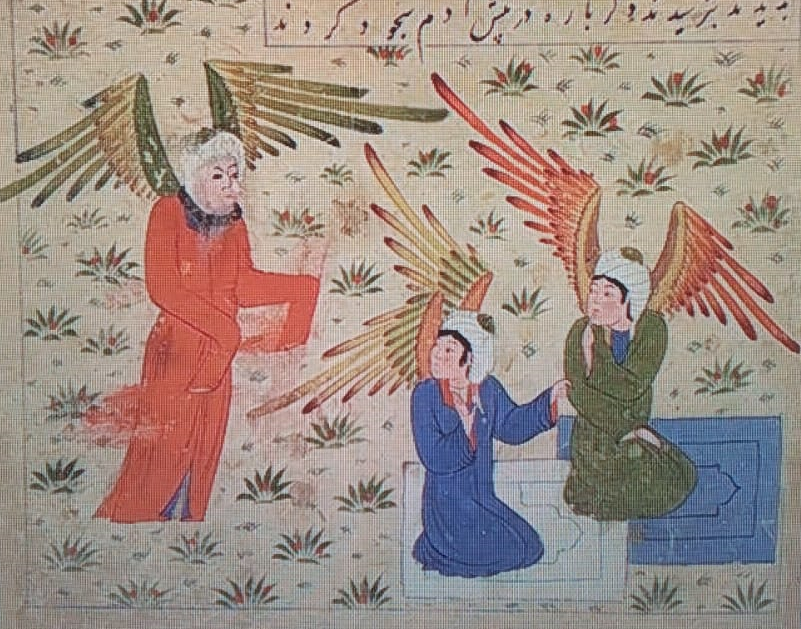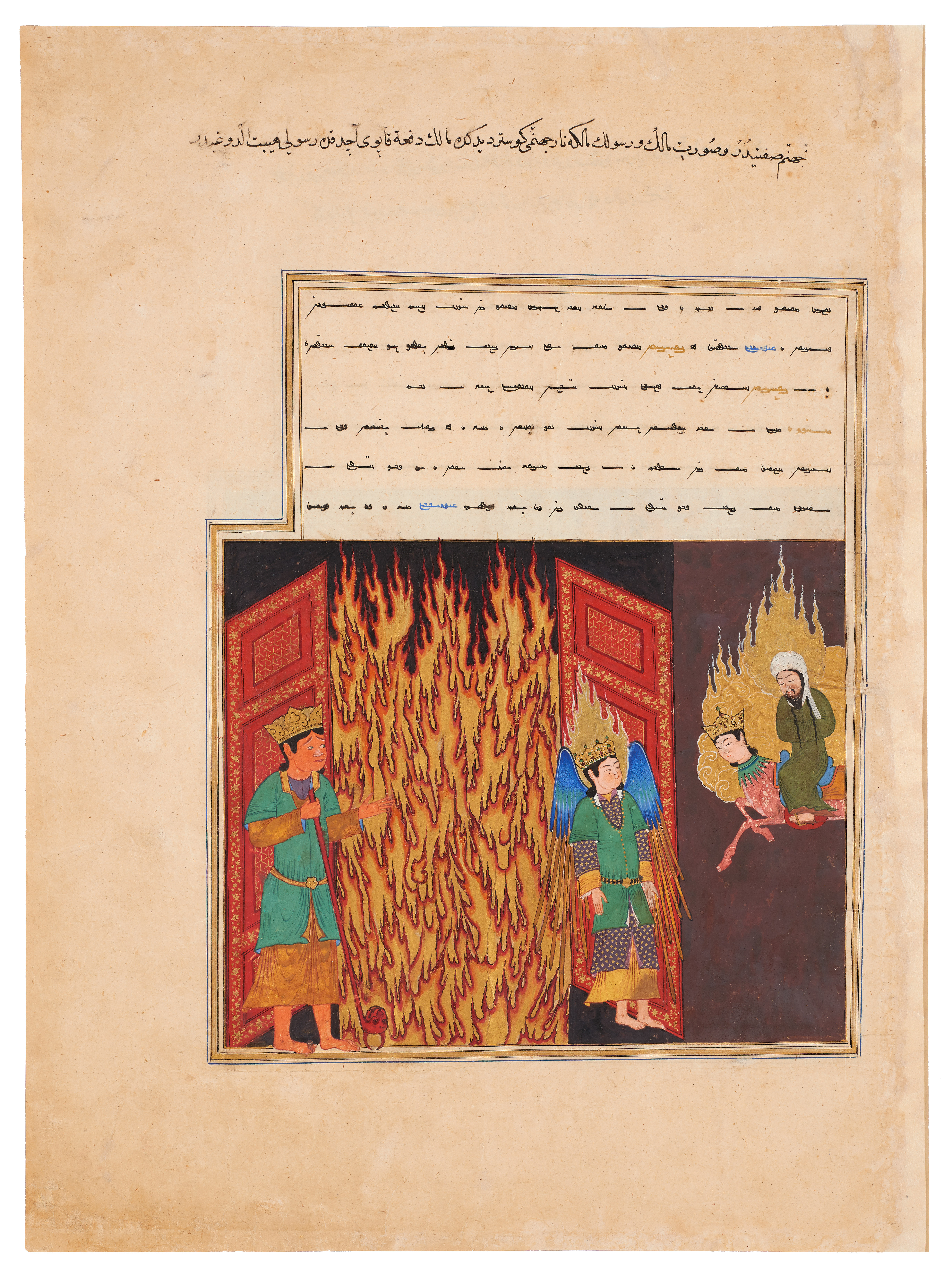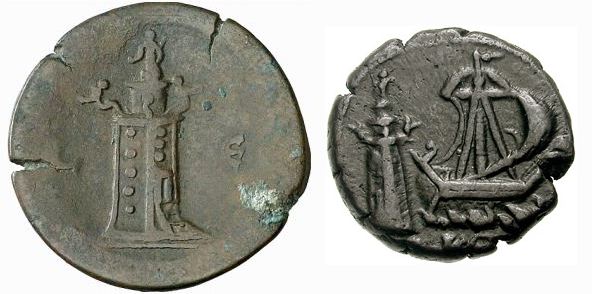|
Iblīs
Iblis ( ar, إِبْلِيس, translit=Iblīs), alternatively known as Eblīs, is the leader of the devils () in Islam. According to the Quran, Iblis was thrown out of heaven, after he refused to prostrate himself before Adam. Regarding the origin and nature of Iblis, there are two different viewpoints. In the first version, before Iblis was cast down from heaven, he used to be a high-ranking angel (''Karub'') called Azazil, appointed by God to obliterate the original disobedient inhabitants of the earth, who were replaced with humans, as more obedient creatures. After Iblis objected to God's decision to create a successor (), he was punished by being relegated and cast down to earth as a (devil). In the alternative account, God created Iblis from the fires beneath the seventh earth. Worshipping God for thousands of years, Iblis ascended to the surface, whereupon, thanks to his pertinacious servitude, he rose until he reached the company of angels in the seventh heaven. When ... [...More Info...] [...Related Items...] OR: [Wikipedia] [Google] [Baidu] |
Azazil
In many Islamic and Islam-related traditions, Azazil (Arabic: عزازيل ''ʿAzāzīl'', also known as Arabic: حارث ''Ḥārith'') is the legendary prototype of the devil in Islamic culture. Azazil was considered to be among the nearest to God's throne, but because he sinned through pride, he became a devil. In Islamic tradition, ''Azazil'' is usually seen as the original name of Iblis, before he was expelled from heaven. Although Azazil is mostly portrayed as an archangel, who was already created when God made the jinn, in some reports Azazil is considered created as a jinni first but elevated to the rank of the angels. In some mystical interpretations of Islam, like Sufism, Ismailism and Alevism, Azazil's fall happened before the creation of the world and therefore, becomes the originator of sin in this world. Etymology and naming The name is derived from Azazel, a fallen angel in the Apocalypse of Abraham. Here, Azazel is said to have lost his former glory as a serva ... [...More Info...] [...Related Items...] OR: [Wikipedia] [Google] [Baidu] |
Shaitan
' (; ''devils'' or ''demons''), singular: (شَيْطَان) are evil spirits in Islam, inciting humans (and jinn) to sin by "whispering" (وَسْوَسَة, “waswasah”) to their qalb, hearts (قَلْب ''qalb''). Folklore suggests that they are grotesque creatures created from Jahannam, hell-fire.el-Zein, Amira (2009). Islam, Arabs, and Intelligent World of the Jinn. Syracuse, NY: Syracuse University Press. ISBN 978-0-8156-5070-6. The Quran speaks of various ways that shayāṭīn tempt humans into sin. They may teach sorcery, assault heaven to steal the news of the angels, or lurk near humans without being seen. Related to the shayāṭīn is Iblis (Satan), who is generally considered to be their leader. Hadith, Hadith-literature holds shayāṭīn responsible for various calamities which may affect personal life. Both hadith and folklore usually speak about shayāṭīn in abstract terms, describing their evil influence only. During Ramadan, the shayāṭīn are chained ... [...More Info...] [...Related Items...] OR: [Wikipedia] [Google] [Baidu] |
Jinn
Jinn ( ar, , ') – also Romanization of Arabic, romanized as djinn or Anglicization, anglicized as genies (with the broader meaning of spirit or demon, depending on sources) – are Invisibility, invisible creatures in early Arabian mythology, pre-Islamic Arabian Religious system, religious systems and later in Islamic mythology and Islamic theology, theology. Like humans, they are accountable for their deeds, can be either believers (''Muslim'') or unbelievers (''kafir''); depending on whether they accept God's guidance. Since jinn are neither innately evil nor innately good, Islam acknowledged spirits from other religions and was able to adapt spirits from other religions during its expansion. Jinn are not a strictly Islamic concept; they may represent several Religion in pre-Islamic Arabia, pagan beliefs integrated into Islam. To assert a strict monotheism and the Islamic concept of ''Tauhid'', Islam denies all affinities between the jinn and God, thus placing the jinn ... [...More Info...] [...Related Items...] OR: [Wikipedia] [Google] [Baidu] |
Angels In Islam
In Islam, angels ( ar, , malāk; plural: ar, , malāʾik/malāʾikah, label=none) are believed to be heavenly beings, created from a luminous origin by God. They have different roles, including their praise of God, interacting with humans in ordinary life, defending against devils (''shayāṭīn'') and carrying on natural phenomena. Islam acknowledges the concept of angels both as anthropomorphic creatures with wings and abstract forces advising good. Belief in angels is one of the main articles of faith in Islam. The Quran is the principal source for the Islamic concept of angels, but more extensive features of angels appear in hadith literature, literature, Islamic exegesis, theology, philosophy, and mysticism. The angels differ from other spiritual creatures in their attitude as creatures of virtue, in contrast to devils and jinn. Angels play an important role in Muslim everyday life by protecting the believers from evil influences and recording the deeds of humans. Isl ... [...More Info...] [...Related Items...] OR: [Wikipedia] [Google] [Baidu] |
Angels (malāʾika) Meet Adam
In various theistic religious traditions an angel is a supernatural spiritual being who serves God. Abrahamic religions often depict angels as wikt:benevolent, benevolent celestial intermediaries between God (or Heaven) and humanity. Other roles include protectors and guides for humans, and servants of God. Abrahamic religions describe angelic Hierarchy of angels, hierarchies, which vary by religion and sect. Some angels have specific names (such as Gabriel or Michael (archangel), Michael) or titles (such as seraph or archangel). Those expelled from Heaven are called fallen angels, distinct from the heavenly host. Angels in art are usually shaped like humans of extraordinary beauty. They are often identified in Christian artwork with Bird flight, bird wings, Halo (religious iconography), halos, and divine light. Etymology The word ''angel'' arrives in modern English from Old English ''engel'' (with a hard ''g'') and the Old French ''angele''. Both of these derive from ... [...More Info...] [...Related Items...] OR: [Wikipedia] [Google] [Baidu] |
Arabic Verbal Root
The roots of verbs and most nouns in the Semitic languages are characterized as a sequence of consonants or " radicals" (hence the term consonantal root). Such abstract consonantal roots are used in the formation of actual words by adding the vowels and non-root consonants (or "transfixes") which go with a particular morphological category around the root consonants, in an appropriate way, generally following specific patterns. It is a peculiarity of Semitic linguistics that a large majority of these consonantal roots are triliterals (although there are a number of quadriliterals, and in some languages also biliterals). Such roots are also common in other Afroasiatic languages. Notably, while Berber mostly has triconsonantal roots, Egyptian and its modern descendant, Coptic, both prefer biradical and monoradical roots. Triconsonantal roots A triliteral or triconsonantal root ( he, שורש תלת-עיצורי, '; ar, جذر ثلاثي, '; syr, ܫܪܫܐ, ') is a root containing ... [...More Info...] [...Related Items...] OR: [Wikipedia] [Google] [Baidu] |
Studia Islamica
''Studia Islamica'' is an academic journal of Islamic studies focusing on the history, religion, law, literature, and language of the Muslim world, primarily Southwest Asian and Mediterranean lands. The editors-in-chief are A. L. Udovitch (Princeton University) and Houari Touati (School for Advanced Studies in the Social Sciences The School for Advanced Studies in the Social Sciences (french: École des hautes études en sciences sociales; EHESS) is a graduate ''grande école'' and ''grand établissement'' in Paris focused on academic research in the social sciences. The ...). It was established in 1953 and is published biannually. Brill has published the journal since 2013. External links * Publications established in 1953 Islamic studies journals Multilingual journals Biannual journals Brill Publishers academic journals {{islam-journal-stub ... [...More Info...] [...Related Items...] OR: [Wikipedia] [Google] [Baidu] |
Routledge
Routledge () is a British multinational publisher. It was founded in 1836 by George Routledge, and specialises in providing academic books, journals and online resources in the fields of the humanities, behavioural science, education, law, and social science. The company publishes approximately 1,800 journals and 5,000 new books each year and their backlist encompasses over 70,000 titles. Routledge is claimed to be the largest global academic publisher within humanities and social sciences. In 1998, Routledge became a subdivision and imprint of its former rival, Taylor & Francis Group (T&F), as a result of a £90-million acquisition deal from Cinven, a venture capital group which had purchased it two years previously for £25 million. Following the merger of Informa and T&F in 2004, Routledge became a publishing unit and major imprint within the Informa "academic publishing" division. Routledge is headquartered in the main T&F office in Milton Park, Abingdon, Oxfordshire and ... [...More Info...] [...Related Items...] OR: [Wikipedia] [Google] [Baidu] |
Ar-Rum
Ar-Rum ( ar, الروم, translit=’ar-rūm, lit=The Romans) is the 30th chapter (sūrah) of the Quran, consisting of 60 verses ( āyāt). The term ''Rūm'' originated in the word ''Roman'', and during the time of the Islamic prophet Muhammad, it referred to the Eastern Roman Empire; the title is also sometimes translated as "The Greeks" or "The Byzantines". The surah provides information on how the cataclysmic Byzantine–Sassanid War of 602–628 looked to the Arabs of Mecca—interested onlookers who were still unaware that, within a single generation, they would enter the realm of imperialism and defeat both the Byzantines and the Sassanids. Summary The chapter begins by noting the recent defeat of the Byzantine Empire to the Sassanid Empire in Jerusalem, near the Dead Sea. This defeat posed a significant theological and sociological problem for the early Muslim community because the Byzantines were Christians (considered to be "People of the Book" from the Islamic ... [...More Info...] [...Related Items...] OR: [Wikipedia] [Google] [Baidu] |
Pharos Media & Publishing Pvt Ltd
The Lighthouse of Alexandria, sometimes called the Pharos of Alexandria (; Ancient Greek: ὁ Φάρος τῆς Ἀλεξανδρείας, contemporary Koine ), was a lighthouse built by the Ptolemaic Kingdom of Ancient Egypt, during the reign of Ptolemy II Philadelphus (280–247 BC). It has been estimated to have been at least in overall height. One of the Seven Wonders of the Ancient World, for many centuries it was one of the tallest man-made structures in the world. The lighthouse was severely damaged by three earthquakes between 956 and 1323 AD and became an abandoned ruin. It was the third-longest surviving ancient wonder (after the Mausoleum at Halicarnassus and the extant Great Pyramid of Giza), surviving in part until 1480, when the last of its remnant stones were used to build the Citadel of Qaitbay on the site. In 1994, a team of French archaeologists dove into the water of Alexandria's Eastern Harbour and discovered some remains of the lighthouse on the sea flo ... [...More Info...] [...Related Items...] OR: [Wikipedia] [Google] [Baidu] |
Sufi Islam
Sufism ( ar, ''aṣ-ṣūfiyya''), also known as Tasawwuf ( ''at-taṣawwuf''), is a mystic body of religious practice, found mainly within Sunni Islam but also within Shia Islam, which is characterized by a focus on Islamic spirituality, ritualism, asceticism and esotericism. It has been variously defined as "Islamic mysticism",Martin Lings, ''What is Sufism?'' (Lahore: Suhail Academy, 2005; first imp. 1983, second imp. 1999), p.15 "the mystical expression of Islamic faith", "the inward dimension of Islam", "the phenomenon of mysticism within Islam", the "main manifestation and the most important and central crystallization" of mystical practice in Islam, and "the interiorization and intensification of Islamic faith and practice". Practitioners of Sufism are referred to as "Sufis" (from , ), and historically typically belonged to "orders" known as (pl. ) – congregations formed around a grand who would be the last in a chain of successive teachers linking back to Muhamm ... [...More Info...] [...Related Items...] OR: [Wikipedia] [Google] [Baidu] |
Al-Jili
Abd al-Karīm al-Jīlī, or Abdul Karim Jili (Arabic:عبدالكريم جيلى) was a Muslim Sufi saint and Mysticism, mystic who was born in 1365, in what is modern day Iraq, possibly in the neighborhood of Jil in Baghdad. He is known in Muslim mysticism as the author of ''Universal Man''. Jili was a descendant of the Sufi saint Abdul-Qadir Gilani, Abdul Qadir Gilani, the founder of the Qadiriyya dervish order. Although little is known about his life, historians have noted that Jili travelled in various places around the world. He wrote more than twenty books, of which ''Universal Man'' is the best known. Jili was the foremost systematizer and one of the greatest exponents of the work of Ibn Arabi. ''Universal Man'' is an explanation of Ibn Arabi's teachings on the structure of reality and human perfection. Since it was written, it has been held up as one of the masterpieces of Sufi literature. Jili conceived of the Absolute Being as a Self, a line of thinking which later infl ... [...More Info...] [...Related Items...] OR: [Wikipedia] [Google] [Baidu] |
_meet_Adam.png)






